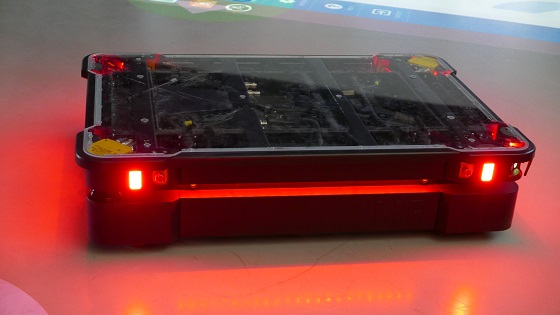As the use of mobile robots continues to surge in industrial settings, the Association for Advancing Automation (A3) has unveiled the second installment of its flagship safety standard for industrial mobile robots, providing guidance on safe integration practices for these systems.
R15.08-2, the American National Standard for Industrial Mobile Robots (IMRs) – Safety Requirements – Part 2: Requirements for IMR system(s) and IMR application(s) provides safety requirements for deploying IMR systems into an industrial environment. R15.08-2 specifies requirements for integrating, configuring, and customizing an IMR or fleet of IMRs into a site.
The new standard — accredited by the American National Standard Institute (ANSI) — can be purchased online today at AUTOMATE.ORG/buystandards or at the International Robot Safety Conference today through October 11 in Pittsburgh.
“With the rapid development of mobile robot capabilities, it’s more important than ever for the safety of human workers to have common safety requirements and expectations for IMR systems and system integrations,” said Carole Franklin, director of robotic standards development at A3. “The R15.08 Part 2 is much-needed guidance toward ensuring safe integration practices for IMRs and will be a solid foundation for future work in this area.”
With IMRs becoming increasingly prevalent in industrial settings, A3 first established common safety requirements to guide IMR manufacturers, with R15.08 Part 1 (ANSI/RIA R15.08-1-2020) published in late 2020. R15.08-2 now follows with requirements for system integrators.
An anticipated companion to R15.08 Part 1
Until now, mobile robot system integrators had only general safety requirements for industrial machinery. R15.08-2 provides a common set of requirements for IMRs, while being flexible enough to permit companies to develop their own unique solutions.
In this document, R15.08-2:
- Describes different types of IMRs and aspects of IMR systems
- Covers the adaptations necessary for the application and the facility in which the IMR(s) will be used
- Describes safety requirements when IMRs interact with workstations, charging stations, and other equipment
- Explains safety considerations regarding the deployed operating environment
“A paradigm shift has occurred in recent years with the continued advancement of mobile robots in the workplace, and this shift demanded safety requirements beyond what is offered in other robot safety standards,” Franklin said. “With Part 2 of the R15.08 standard, system integrators now have specific requirements that will help them ensure they’re deploying the safest mobile robot systems available in their customers’ facilities.”
At the International Robot Safety Conference, Jeff Pratt, chair of the R15.08 committee and senior corporate EHS engineer at Crown Equipment, will introduce the R15.08 family of standards for industrial mobile robot safety in a general session at 1:30 p.m. ET. R15.08 committee vice chair Chris Soranno, the safety standards & competence manager at SICK, will take a deeper dive into “Mobile Robot Safety: The New R15.08-Part 2, at 2:30 p.m. ET.
What’s next in IMR safety standards?
With the publication of the R15.08-2 complete, A3’s R15.08 committee will next develop R15.08 Part 3, which will provide safety requirements for users of IMR systems and IMR applications. The R15.08 Committee will also consider developing technical reports to address emerging topics such as mobile robot technology advances. Such topics will likely include multi-sensor fusion, additional stability testing, stability validation and additional dynamic stability testing.

